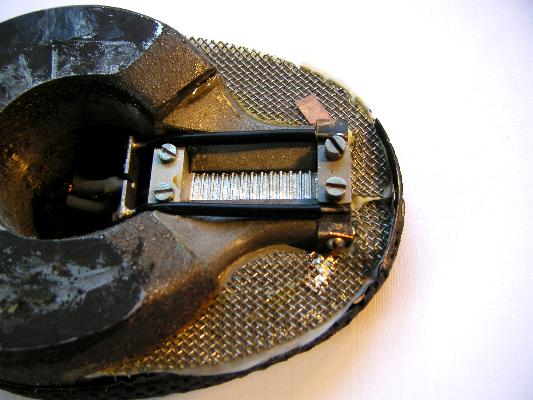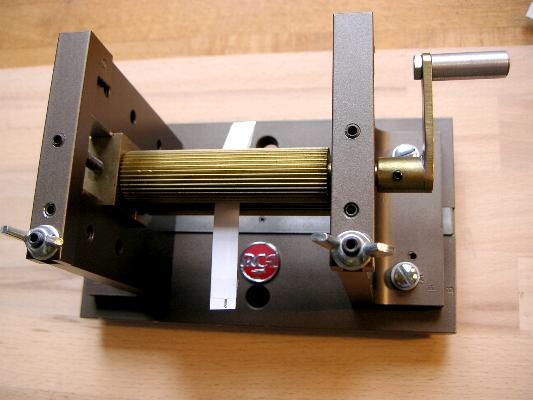BBob
Member
http://microphonium.blogspot.com/2006/05/fisher-phantom-powered-ribbon-mic-two.html
is a large image (or way to get to it) with better detail where you can see the machining marks on the tapered pole pieces that have been silver plated over steel. That aerial frame arrangement is a little wiggly. We didn't need to use the adjustment screws to get the ribbon into a good position and tension.
Indeed it is a rare bird and very interesting. The ribbon is tapered and today we put in a replacement as the original was stretched. While the ribbon was out the field was measured at the top, middle and bottom of the gap and found to be a fairly uniform 500 Gauss. Quite a weak field. Yet the onboard amplifier is enough to get a good signal, albeit with some noise. The stray fields around this mic are almost too high to handle, and there is little magnetic or electrical shielding.
Little thought has gone into the acoustic coupling of sound and ribbon, with the obvious exception of the tapered pole pieces. (edit: what I mean by this is there is nothing like an acoustic resistance or matching element in the near field of the ribbon save the pole pieces and of course the ribbon itself. Instead of "little thought" I should simply say "little work")
Overall, the machining is good, but the assembly is messy, and home-made. A DIN connector supplies plus and minus 15V from an external supply, and conducts the amplified signal to an external UTC transformer in yet another, separate enclosure.
I will capture some spectral data and put that on the blog. It has plenty of signal around 15 KC and is quite flat over its range.
CJ, fascinating fields - especially the blue rings - thanks - your doing?
Bbob
http://microphonium.blogspot.com
is a large image (or way to get to it) with better detail where you can see the machining marks on the tapered pole pieces that have been silver plated over steel. That aerial frame arrangement is a little wiggly. We didn't need to use the adjustment screws to get the ribbon into a good position and tension.
Indeed it is a rare bird and very interesting. The ribbon is tapered and today we put in a replacement as the original was stretched. While the ribbon was out the field was measured at the top, middle and bottom of the gap and found to be a fairly uniform 500 Gauss. Quite a weak field. Yet the onboard amplifier is enough to get a good signal, albeit with some noise. The stray fields around this mic are almost too high to handle, and there is little magnetic or electrical shielding.
Little thought has gone into the acoustic coupling of sound and ribbon, with the obvious exception of the tapered pole pieces. (edit: what I mean by this is there is nothing like an acoustic resistance or matching element in the near field of the ribbon save the pole pieces and of course the ribbon itself. Instead of "little thought" I should simply say "little work")
Overall, the machining is good, but the assembly is messy, and home-made. A DIN connector supplies plus and minus 15V from an external supply, and conducts the amplified signal to an external UTC transformer in yet another, separate enclosure.
I will capture some spectral data and put that on the blog. It has plenty of signal around 15 KC and is quite flat over its range.
CJ, fascinating fields - especially the blue rings - thanks - your doing?
Bbob
http://microphonium.blogspot.com


















